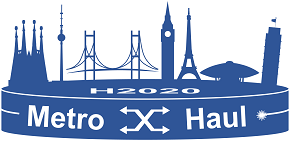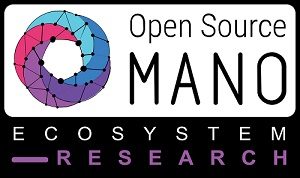
- This event has passed.
European Conference on Networks and Communications (EuCNC) 2018

Workshop organized by Metro-Haul, 5G-PICTURE and 5G-PHOS projects;
- WS5: Optical and Wireless Network Convergence: An Enabler for 5G (18th (Mon) June, 09:00-18:00, E2 hall, https://www.eucnc.eu/workshops/workshop-5/)
- Motivation and Background: The current trend towards softwarization of telecommunications networks blurs the lines between domains where the different network functionalities reside. In addition to that, a key promise of 5G is to support a very diverse set of services including vertical industries, relying on a common network infrastructure that can be flexibly and efficiently shared through virtualisation. Both of these are hot topics in the telecommunications industry and academia, and can enable crossing of traditional boundaries between wireless access, optical access, metro and core networks as well as cloud computing.
This vision can be facilitated through the advent of network function virtualisation, cloud radio access networks, and software-defined networking, while it is becoming critical to bring the optical and wireless research communities together to solve problems of direct impact to fixed and mobile operators. In this context, particular emphasis needs to be given on the integration and orchestration of different access and transport technologies.
To address the large variety of 5G services, RAN deployments need to be transformed into open, scalable and dynamic ecosystems able to flexibly and efficiently support greatly varying requirements. In this context, new architectural models allow to migrate from highly distributed and inefficient structures to more centralized approaches relying on concepts such as the Cloud-RAN. Cloud-RAN and its variants including dynamic functional splits, introduce the need for fronthaul services interconnecting remote antennas with processing units to allow centralization and ultimately RAN softwarization. Through pooling and coordination gains of softwarized/centralized RANs, significant cost reductions as well as increased scalability and flexibility can be achieved. To successfully deploy the concept of softwarized RAN and support the increased backhaul requirements of 5G services, there is a need for high capacity transport networks interconnecting remote antennas with compute resources where softwarized versions of the RAN protocol stack are also executed. This will be enabled by control plane solutions that manage and optimize the operation of a large number of highly heterogeneous network and compute elements. It is therefore clear that 5G goes far beyond the definition of new RAN technologies and interfaces and is about a new end-to-end network vision, in which softwarization and virtualization allow a common network infrastructure to be flexibly used by a variety of ICT applications and a wide range of vertical industries. In this context, transport networks that can support end-to-end requirements associated with both fronthaul and backhaul services, including huge increase in capacity and connectivity and very stringent latency constraints play a key role.
This workshop is co-organized by the FUTEBOL project, a collaboration between Europe and Brazil that is enabling experimental research across optical and wireless testbeds. This workshop is also co-organized by 3 Phase II 5G PPP projects, 5G-PICTURE, Metro-Haul and 5G-PHOS, which focus on advanced 5G transport networks, exploiting optical network technologies.
This workshop will bring together researchers from industry and academia to discuss trends, challenges and opportunities for research and development of wireless/optical network convergence and transport network related challenges. Emphasis will be given on the wireless/optical network boundaries and the associated interfacing and cross-domain orchestration requirements. It will also bring together some of the main European projects dealing with issues that encompass both wireless and optical networks.
Technical paper by Ramon Casellas, Ricard Vilalta, Lluis Gifre, Jose-Luis Izquierdo-Zaragoza, Raül Muñoz, Marc Ruiz, Ricardo Martínez, Luis Velasco, from CTTC, Universitat Politècnica de Catalunya (UPC), Universidad Autónoma de Madrid (UAM);
- Title: Metro-Haul: Supporting Autonomic NFV Services over Disaggregated Optical Networks
- Abstract: The Metro-Haul Control, Orchestration and Management (COM) architecture is presented from a high-level point of view; it enables the dynamic provisioning of services such as network data connectivity or network slicing instances. The COM is based on Software Defined Networking (SDN) principles and is hierarchical, with a dedicated controller per technology domain. Along with the SDN control plane for the provisioning of connectivity, an ETSI NFV Management and Orchestration (MANO) part is responsible for the instantiation of Network Services, understood in this context as interconnected Virtual Network Functions (VNF). A key, novel component of the COM architecture is the Monitoring and Data Analytics (MDA) system, able to collect monitoring data from the network, datacenters and applications which outputs can be used to proactively reconfigure resources thus adapting to future conditions, like load or degradations. To illustrate the Metro-Haul COM architecture, a use case of a Content Delivery Network (CDN) network service taking advantage of the MDA ability to collect and deliver monitoring data is experimentally demonstrated.
EuCNC 2018 is the 27th edition of a successful series of technical conferences in the field of telecommunications, sponsored by IEEE ComSoc and EURASIP, and financially supported by the European Commission, focusing on communication networks and systems, and reaching services and applications. It targets to bring together researchers from all over the world to present their latest research results, being one of the main venues for showcasing, demonstrating and trialling the results of research projects, especially from successive European R&D programmes.



